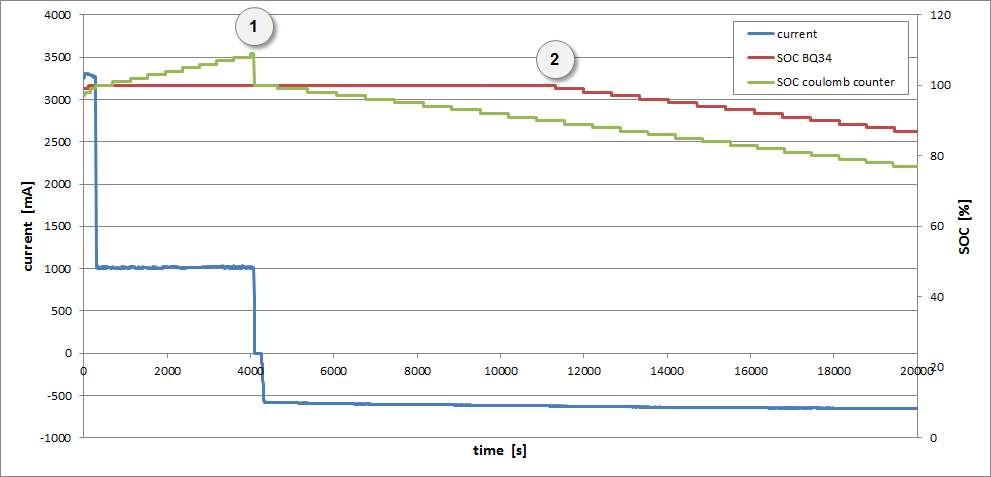Other Parts Discussed in Thread: GPCCHEM
Hello,
I'm using the BQ34Z100-G1 for monitoring a NiMH battery pack.
During the charging phase, the charger apply a kind of trickle charge for a copula of hours after the SOC has reached the 100% value. In the following discharge phase I see the SOC level remains at 100% value for a long time (few hours). Such a "latency" in the SOC update during discharge creates a big error in the SOC estimation.
How is it possible to increase the "reactivity" of BQ34Z100-G1 at beginning of the discharge phase?
Thank you for any support and best regards.
Matteo
P.S. In attachment you can find the configuration file190918_configurazione_NiMH_paccoX_ver0002.gg.csv


